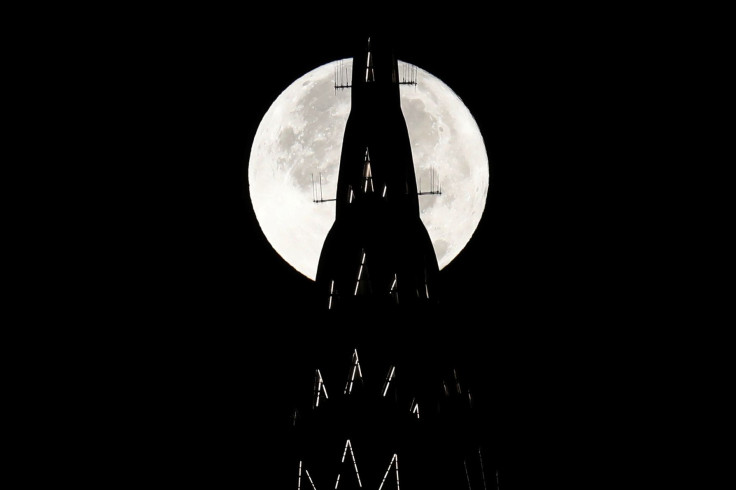Supermoon 2016: What Is November's Supermoon And How Are Blood Moons And Blue Moons Different?

The many phases of the moon make for interesting and ever-changing night skies. Full moons, supermoons, blood moons and blue moons all hover in the sky with varying degrees of rarity. Monday brought the largest full moon the world has seen in 70 years: a supermoon. The supermoon appeared in the sky just after sunset, reaching its largest and brightest at 6:22 a.m. Another like it won’t grace Earth's skies until 2034.
A supermoon emerges when the moon is full and at its closest position to Earth. Since the moon's path around our planet is elliptical, or oval-shaped, the distance between the two varies from day to day. When the moon is at its very nearest to Earth, a supermoon appears.
At it’s closest position to Earth, the moon can get up to 14 percent closer than at its furthest point. Because it looks so much larger, it shines up to 30 percent more moonlight onto Earth, appearing in the sky as an oversized supermoon.

A blood moon, though not a technical term, is actually a combination of a supermoon and a full lunar eclipse. During these events, the sunlight passing through the Earth’s atmosphere is refracted in a way that when the Earth’s shadow overtakes the supersized moon, a coppery-orange color appears. Blood moons don't occur on any regular schedule, making it difficult to predict just how rare they are.

A blue moon, though often used in colloquial conversation to refer to something that almost never happens, actually refers to a specific type of moon. The second full moon that appears in a single month is a blue moon. It doesn’t happen often, however, because there are about 29.5 days between full moons. On average, there will be about one blue moon every two and a half years, according to NASA. The moon during this time doesn’t actually look blue, though the term’s origins are truthful. In 1883, the volcano Krakatoa erupted, spewing so much ash and dust into the sky that the moon appeared blue. Thanks to various misunderstandings over the years, the term blue moon became another way to refer to the second full moon in a month.

November’s supermoon is the closest full moon to Earth since 1948 and it’s not over yet. The moon will rise after sunset Monday and again on Dec. 14, 2016.
© Copyright IBTimes 2024. All rights reserved.





















